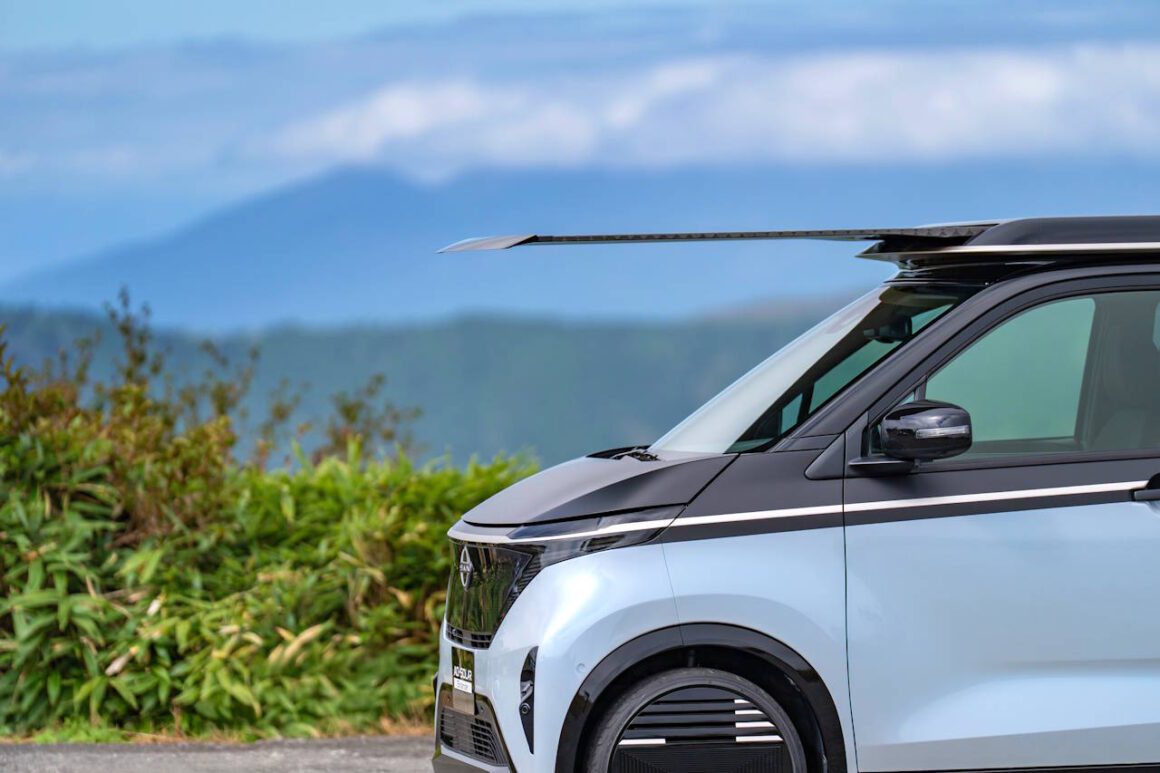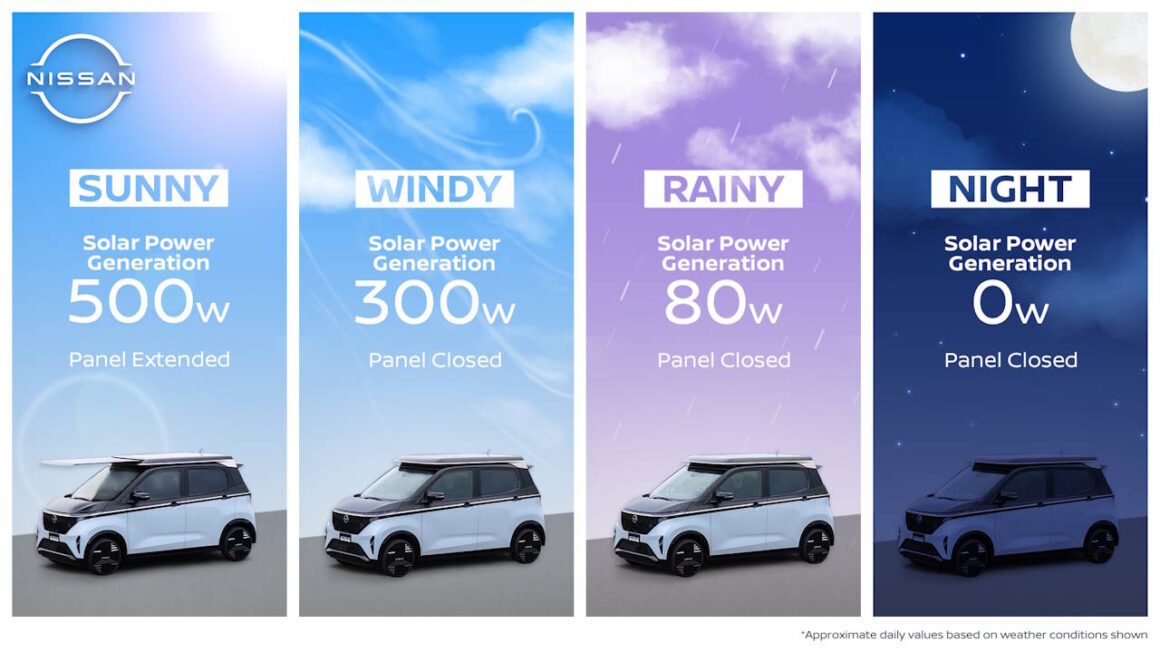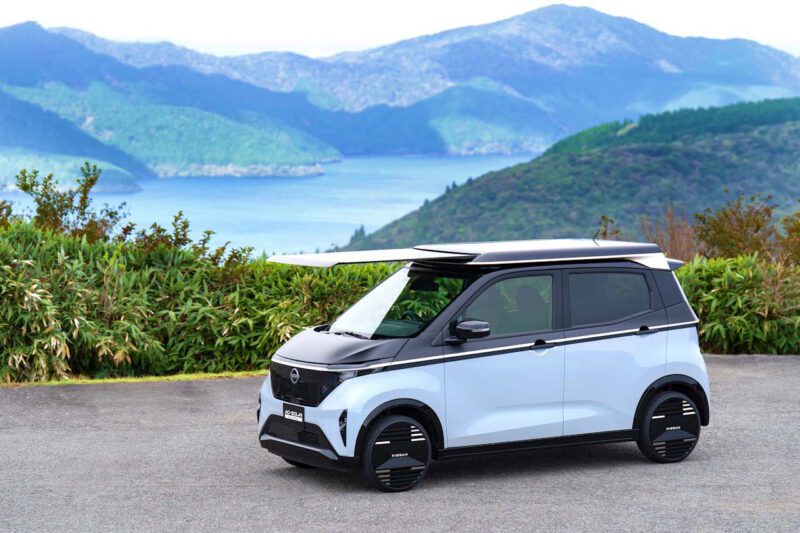Japanese automaker Nissan is preparing to unveil a prototype version of its top-selling Sakura electric vehicle (EV) that boasts an extendable roof-mounted solar system.
Nissan unveiled the Sakura EV as a so-called “minivehicle” in 2022, part of Japan’s highly competitive “Kei” car segment. Named after the iconic Japanese cherry blossom, the Sakura is an affordable EV choice with a small 20kWh battery providing a driving range of up to 180 kilometres (WLTC Japan cycle).
The Sakura is currently only sold in Japan, unsurprisingly for a minivehicle of this type with its limited range, where it has been the country’s best-selling EV for the past three consecutive years.
However, a new addition unveiled last week by Nissan could change that equation one day soon.
Nissan will use this month’s Japan Mobility Show to showcase the prototype which is fitted with what the company calls the Ao-Solar Extender, an extendable roof-mounted solar system.

The Ao-Solar Extender derives its name from a combination of the Japanese word for blue sky, “aozora”, and the more obvious “solar”. Developed by Nissan, the roof-mounted solar system is capable of generating up to 3,000 kilometres worth of driving range each year, or less than 10 kms a day. But most of the trips in the Sakura are short.
Nissan says that it hopes the system will help to reduce reliance on the grid while also enhancing the convenience of EV ownership by simplifying charging.
While the Ao-Solar Extender can charge the Sakura while either driving or parked, the extendable additional solar panel is only able to operate when the car is stationary, increasing the solar panel surface area and power generation potential to approximately 500W. Generation potential will nevertheless be entirely reliant on weather conditions.

As an added bonus – one that many Australian drivers would likely covet – the extended panel helps to provide shade for the front of the car, reducing cabin temperature.
The Sakura is already praised for its daily range, with driving data showing that many owners primarily travel only short distances for errands and school runs. Nissan hopes that the addition of solar-generated power could “nearly eliminate” the need for grid-based charging for a large portion of owners.
Nissan will be displaying the Ao-Solar Extender within the Tokyo Future Tour ‘City Life zone’ at the Japan Mobility Show.
Joshua S. Hill is a Melbourne-based journalist who has been writing about climate change, clean technology, and electric vehicles for over 15 years. He has been reporting on electric vehicles and clean technologies for Renew Economy and The Driven since 2012. His preferred mode of transport is his feet.


